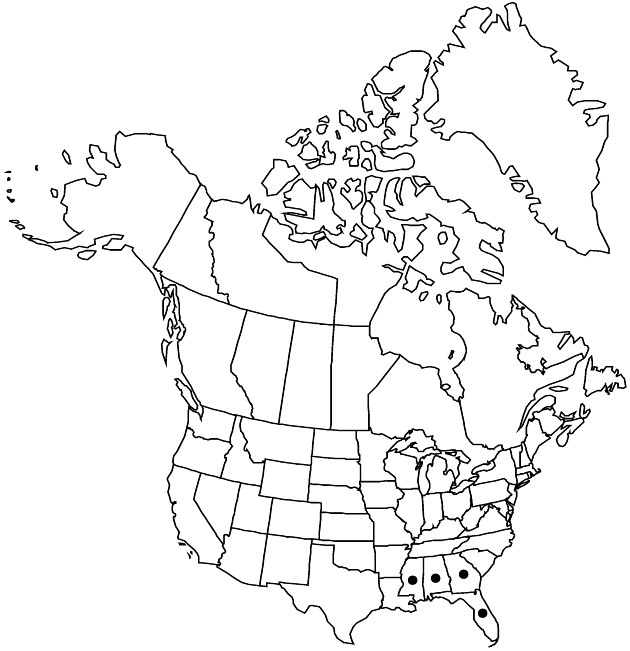Balduina angustifolia
Proc. Amer. Acad. Arts 47: 215. 1911.
Annuals (taprooted). Stems 1–20+, branched. Leaves abaxially glabrous or sparsely hairy, adaxially glabrous; basal leaves (absent at flowering) linear-spatulate, 1.5–6 × 0.05–0.19(–0.25) cm, proximal and mid cauline leaves linear, 1.5–4.6 × 0.02–0.07 cm, distal cauline leaves similar, smaller and becoming reduced, distalmost bractlike. Peduncles 1–11.5 cm, sparsely hairy. Heads 1–20+. Involucres 6–15 mm diam. Phyllaries abaxially glabrous; outer proximally yellow, distally green, lanceolate, 2.4–6.7 mm, apices acuminate-aristate; inner lanceolate, 4.2–7 mm, apices acuminate-aristate. Receptacles: pit borders spinulose-cuspidate at angles. Ray florets 5–13; tubes 2–3 mm, laminae 8–18 × 2.2–6.5 mm. Disc florets 30–90; corollas yellow, 3.5–4.5 mm; style branches yellow. Cypselae 1–2 mm; pappi of obovate to orbiculate, entire scales 0.3–0.6 mm. 2n = 36.
Phenology: Flowering summer–fall (year round south).
Habitat: Dry sandy soils, especially in pinelands
Elevation: 0–100 m
Distribution

Ala., Fla., Ga., Miss.
Discussion
Selected References
None.
